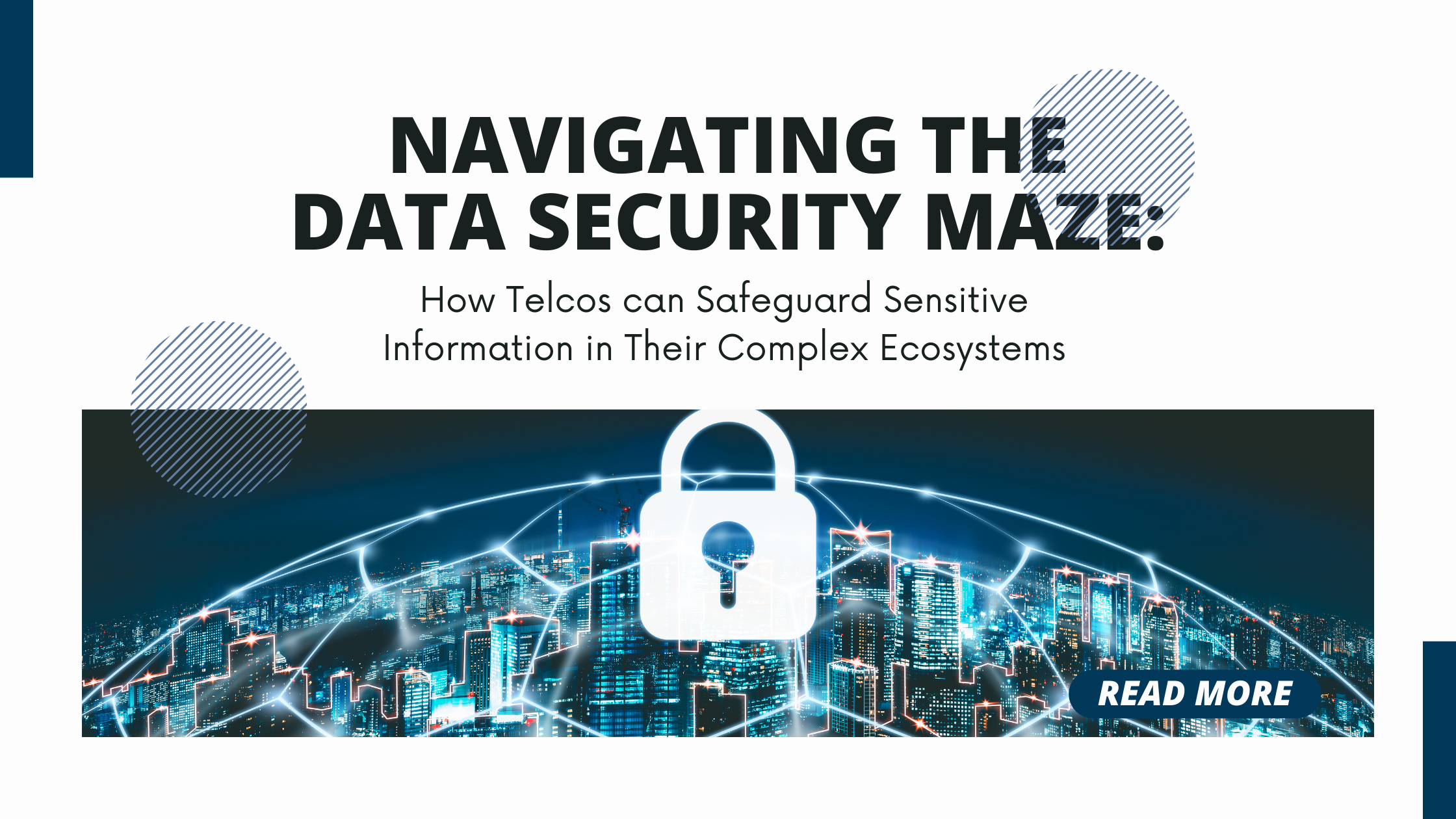In today’s hyper-connected world, telecommunications companies handle a vast amount of sensitive customer data, ranging from personal information to financial details and communication records. This data is crucial not only for providing essential services but also for understanding customer behaviour and driving business growth. However, the sheer volume and sensitivity of this data make telcos prime targets for cyberattacks.
A recent report by Thales Group revealed that 1% of telecom operators participating in their research had more than 90% of their sensitive data encrypted, but recognise there’s a greater need for data encryption [1]. To effectively protect their data, telcos must adopt a comprehensive and multifaceted approach to data security. This involves implementing robust security measures across their entire IT infrastructure, including data centres, cloud environments, and third-party integrations.
Data Security Strategies for Telecom Companies
- Data Encryption: Encrypting sensitive data at rest and in transit is a fundamental security measure. This ensures that even if data is intercepted, it remains unreadable without the proper decryption key. Telcos should implement strong encryption algorithms and regularly update encryption protocols to stay ahead of evolving threats.
- Access Control: Limiting access to sensitive data to authorised individuals is crucial for preventing unauthorized access and data breaches. Telcos should implement role-based access control (RBAC) mechanisms, which grant access permissions based on user roles and responsibilities. Multi-factor authentication (MFA) should also be employed to add an extra layer of security.
- Data Loss Prevention (DLP): DLP solutions help prevent sensitive data from being accidentally or intentionally leaked outside the organisation. Telcos should deploy DLP tools that monitor data usage and identify potential data theft attempts.
- Vulnerability Management: Regularly scanning networks, systems, and applications for vulnerabilities is essential to identify and address potential security weaknesses before they can be exploited. Telcos should establish a vulnerability management program that includes automated scanning tools and manual vulnerability assessments.
- Incident Response Plan: Having a well-defined incident response plan is critical for effectively managing data breaches and minimising their impact. The plan should outline clear procedures for identifying, containing, and remediating security incidents.
- Employee Training: Employees are a key line of defence against cyberattacks. Telcos should provide regular security awareness training to educate employees about common attack vectors, phishing scams, and social engineering techniques.
- Third-Party Security Assessments: When integrating with third-party applications, telcos should conduct thorough security assessments to ensure that these partners meet their own data security standards.
- Data Governance and Compliance: Telcos must establish clear data governance policies and procedures to ensure that data is collected, used, and stored in a compliant and secure manner. This includes adhering to relevant data privacy regulations, such as the General Data Protection Regulation (GDPR), the Protection of Personal Information Act (POPIA), and the California Consumer Privacy Act (CCPA).
Securing Data Centres and Cloud Infrastructure
Data centres and cloud environments are critical components of telcos’ IT infrastructure, and their security must be prioritised. Telcos should implement the following measures to secure their data centres and cloud infrastructure:
- Physical Security: Implement physical security controls, such as access control systems, surveillance cameras, and intrusion detection systems, to protect data centres from unauthorised physical access.
- Network Segmentation: Segment data centre networks to isolate sensitive data and prevent unauthorised lateral movement within the network.
- Secure Configuration: Configure data centre and cloud infrastructure components securely, following best practices and vendor recommendations.
- Continuous Monitoring: Continuously monitor data centre and cloud infrastructure for suspicious activity and potential security threats.
Integrating Third-Party Applications Securely
Telecom companies often integrate with various third-party applications to provide enhanced services and functionalities. When integrating with third-party applications, telcos should follow these guidelines:
- Vendor Due Diligence: Conduct thorough due diligence on third-party vendors, evaluating their security practices and data handling policies.
- Clear Data Sharing Agreements: Establish clear data-sharing agreements with third-party vendors, outlining the purpose, scope, and duration of data sharing.
- API Security: Implement robust API security measures, including authentication, authorization, and input validation, to protect APIs from unauthorised access and malicious attacks.
- Regular Security Audits: Conduct regular security audits of third-party applications to identify and address potential vulnerabilities.
Conclusion
Data security is paramount for telecommunications companies as they handle vast amounts of sensitive customer information. By adopting a comprehensive data security strategy that encompasses data encryption, access control, vulnerability management, incident response planning, employee training, and secure data center and cloud infrastructure practices, telcos can effectively protect their data assets and maintain the trust of their customers.
[1] https://cpl.thalesgroup.com/telecom-data-threat-report









